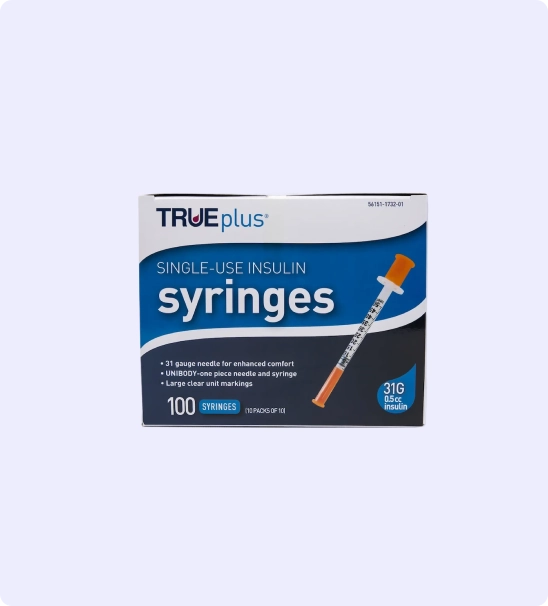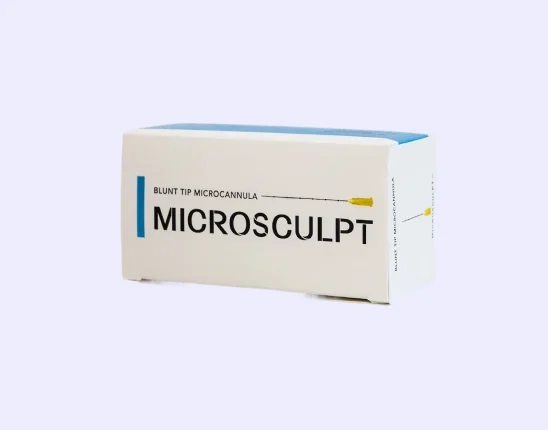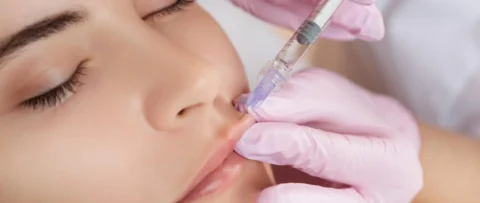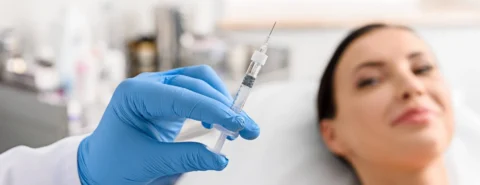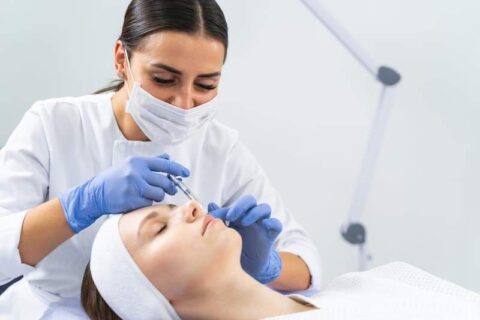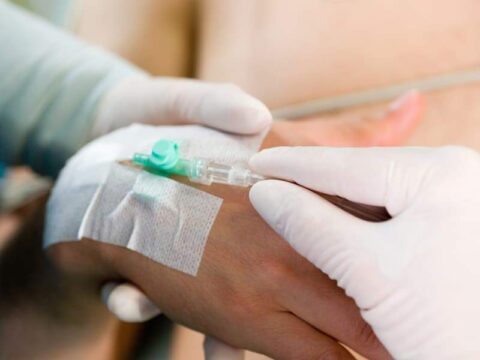Facial fat is one of the leading concerns for many people who want to improve their appearance. Because fat can settle in the cheeks even with the slightest weight gain, liposuction has grown as the preferred treatment option. Most dermatologists and surgeons prefer to use a traditional needle with this process. But recently, some liposuctions have used microcannulas instead.
Should dermatologists and cosmetic practices use microcannulas for cheek liposuction? Absolutely, especially if the patient doesn’t have a lot of experience with facial liposuction. Microcannula use has a lot of benefits to both the plastic surgeon and their patient and is quickly being adopted as the preferred method during plastic surgery.
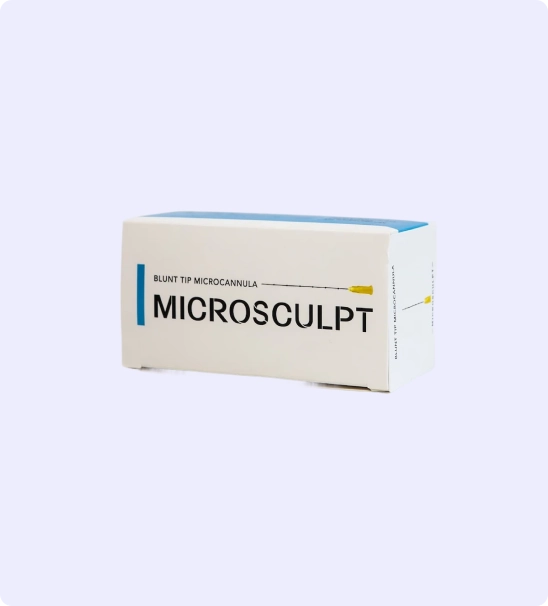
Injections Your Patients Will Love! Code “20OFF” Takes 20% off Your First Order!
Microcannulas are a tool that every great injector must master. Patients want quick results with no downtime. Our microcannulas are high quality and a fraction of the price of our competitors!
You can create an account here.
Why Traditional Liposuction Methods May Not Work Anymore
Most plastic surgeries like liposuctions and facelifts use the traditional method of extracting fat, which is the sharp-tip needle. Sharp tip needles have been a mainstay for many surgical procedures because their design gets under the skin easily, which allows surgeons to remove fat effectively.
However, this approach has always come with some drawbacks, many of which have to do with the sharp-tip needle’s design. Most physicians prefer the traditional needle for more penetration into the skin, but the drawback with this approach is that while traditional hypodermic sharp-tip needles are designed for function, they often fail with comfort.
There are three primary drawbacks to using the traditional method of liposuction:
1. Increased risk of side effects
While traditional sharp tip needles are excellent at penetrating the skin, it does this by piercing its way inside. This allows it to reach deep within the skin layers to siphon away more fat, but it also causes active trauma to the injection site. So there are a lot of associated side effects with traditional liposuction methods like bleeding, bruising, or inflammation.
This is even more dangerous if the surgeon misjudges the injection site and pierces through a blood vessel or an artery instead of the fat layer. While this is unlikely to happen because of their training, the differing facial anatomies of each patient put it in the realm of possibility.
Most of the side effects associated with traditional liposuction procedures aren’t serious, but they can be uncomfortable for the patient. It also lengthens the time the patient needs to recover from the treatment, which can affect the quality of life short term, especially if it’s their first plastic surgery.
2. Inefficient method to remove some fat from some areas of the face
The cheeks are a particularly sensitive area of the face, mostly because of the nerve endings and their proximity to other sensitive areas like the underside of the eyes and lips. For this reason, traditional liposuction methods have always faced some difficulty with removing fat from the cheeks, especially with contouring and sculpting.
This can be an issue because the cheeks are some of the most fat-filled areas of the face and require a lot more liposuction compared to other areas. Traditional liposuction procedures would usually attempt to address this problem by angling the needle to get as much fat as possible, but it still left plastic surgeons plenty of fat that they couldn’t access.
Even if a numbing agent or anesthesia was used, the patient was still likely to experience a lot of pain after the procedure. Swelling and numbness further complicated measuring how much fat still needed to be removed, which can be tricky if the surgeon is unfamiliar with the facial anatomy of their patient.
3. Changes to surgical procedures
Finally, surgical procedures have been improved upon in the past ten years. Cosmetic treatments in particular have seen plenty of innovations in comfort, accessibility, and cost. Side effects like swelling, bruising, and bleeding are not as severe as they were before. Major improvements to both the tools that plastic surgeons have access to and the treatments that patients can consider have made liposuction a versatile area of skincare.
In particular, the microcannula is one of the most significant improvements made to liposuction, as it eliminates the most troublesome aspects of using a traditional sharp tip needle to extract fat. While most physicians may still warm up to the idea of using a microcannula, this tool is fast becoming a favored alternative for patients who don’t want a painful liposuction procedure.
Why Use A Microcannula?
A microcannula is like a traditional hypodermic needle, but it’s thinner and has a blunt, rounded tip. While this may seem like a minor alteration, there are significant advantages behind this change that can make the liposuction procedure a lot easier for both the patient and the surgeon.
Because of the rounded tip, a microcannula pushes instead of piercing its way inside the skin. This allows it to nudge any blood vessels or major arteries aside and reduces the trauma the injection area experiences with each entry. Overall, using a microcannula during the liposuction procedure is less harmful to the patient, more comfortable for the injector, and gives better results overall.
Microcannula use isn’t limited to liposuction either: continued usage with this device can allow a surgeon to gain experience with using cannulas for other purposes. Inserting dermal filler and liposuction of more sensitive areas can be easily achieved once a surgeon is experienced with microcannula use, thus allowing them to expand their services and give their patients more options for medical treatment.
Benefits Of Microcannula Liposuction
Microcannula use during liposuction has several advantages for patients and surgeons, including but not limited to:
1. Less post-operative trauma and recovery
Arguably the most significant benefit from using a gentler tool like a microcannula during liposuction is that the patient experiences less trauma during and after the procedure. Because the design of the microcannula pushes apart muscle and tissue, there’s less chance that the surgeon will trigger any spasms, pierce any veins, and overall do damage to the patient while doing the procedure.
This method is particularly suitable for a facelift because it also cuts down on the visible marks left behind after the procedure is done. Facelifts can often take a while to recover from because of the bleeding, bruising, or swelling after the treatment. Microcannula use reduces the likelihood of this happening since the needle can be inserted with no major damage or discomfort in the area.
2. Decreased likelihood of pain during the surgery
One drawback to using traditional hypodermic needles is that if the surgeon needles an area where anesthetic hasn’t been applied, the patient will most likely experience a lot of pain. This burning discomfort may often be enough for the patient to halt the treatment mid-procedure, or at the very least request for more anesthesia – neither being an ideal situation for the surgeon.
If the patient is put to sleep during liposuction, microcannula use will still suffice as a preventive measure for pain once they wake up, or if they wake up mid-treatment. Even if the patient will experience some pain during the procedure, the probability that the patient will experience pain debilitating enough to stop the sessions entirely is low.
3. Removes more fat
Microcannulas do not remove as much fat as hypodermic needles or even regular-sized cannulas because of their smaller structure and thinner tubing, but they offset this drawback by being able to remove fat while causing no surface damage to the skin. While microcannulas take longer to remove fat from an area, they can remove more overall fat compared to needles and regular cannulas.
Removing cheek fat can be tricky because the soft and sensitive skin of the cheeks doesn’t hold up for too long with repeated injections of a sharp-tip needle. Most surgeons and dermatologists will usually avoid prolonged or many injections, since the trauma encourages swelling and bruising at the injection site. Microcannulas don’t have this issue, which allows for more efficient fat removal.
4. Better contours and overall results from liposuction
Finally, the precise design of microcannulas allows them to remove more fat per session compared to traditional methods, allowing the surgeon to sculpt the area during removal. One drawback of using sharp tip needles is that they are usually used deeper within the skin to avoid any surface scarring or swelling, so the surface layers of fat remain.
Microcannulas don’t run into this problem. This is essential for areas like the cheeks where the fat is connected to the muscle beneath it. Because cannulas can remove fat without disconnecting the fibers that bind the skin to muscle, the upper layer can fall back into place after the fat has been removed. This makes for a more natural-looking finish that’s difficult to achieve without extra work on the chin or other areas.
Overall, using microcannulas for liposuction offers more precise fat removal and an easier time for patients and surgeons alike. Compared to traditional methods of fat removal, using a microcannula is an excellent way to get the most out of a single procedure.
Of course, this all predicated on the assumption that the surgeon in question has skill and or certification with microcannula use – if this is not the case, it may be best for them to pursue more traditional methods. However, they should keep in mind that ignoring this medical innovation may severely cripple their skill set in the future.
Buy Microcannulas And Other Medical Devices At FACE Medical Supply
-
 23 gauge 50 mm (2 inch) Microcannulas
23 gauge 50 mm (2 inch) Microcannulas -
 22 Gauge 100 mm (4 inch) Microcannulas.
22 Gauge 100 mm (4 inch) Microcannulas. -
 27 Gauge 38 mm (1.5 inch) Microcannulas
27 Gauge 38 mm (1.5 inch) Microcannulas -
 25 Gauge 38 mm (1.5 inch) Microcannulas
25 Gauge 38 mm (1.5 inch) Microcannulas -
 30 Gauge 25 mm (1 inch) Microcannulas
30 Gauge 25 mm (1 inch) Microcannulas -
 18 Gauge 100 mm (4 inch) Microcannulas
18 Gauge 100 mm (4 inch) Microcannulas -
 25 Gauge 50 mm (2 inch) Microcannulas
25 Gauge 50 mm (2 inch) Microcannulas -
 21 Gauge 50 mm (2 inch) Microcannulas
21 Gauge 50 mm (2 inch) Microcannulas -
 21 Gauge 70 mm (2.75 inch) Microcannulas
21 Gauge 70 mm (2.75 inch) Microcannulas
Microcannulas for liposuction not only present fewer risks for the surgeon and patient, but can also offer several advantages compared to traditional methods. However, it’s important to evaluate the patient and their condition before deciding to proceed with microcannula use. With the right training and the correct use of the tool, microcannula liposuction can be a relatively painless process.
At FACE Medical Supply, we pride ourselves on offering high-quality yet affordable medical supplies and tools to cosmetic practices and dermatologists around the country. As their partner in expanding their services and their offerings, we strive to deliver a reliable supply of goods and equipment with stellar customer service.
For more information on what we can provide, check our product list today.
Read more: What To Consider When Microneedling Under The Eyes
